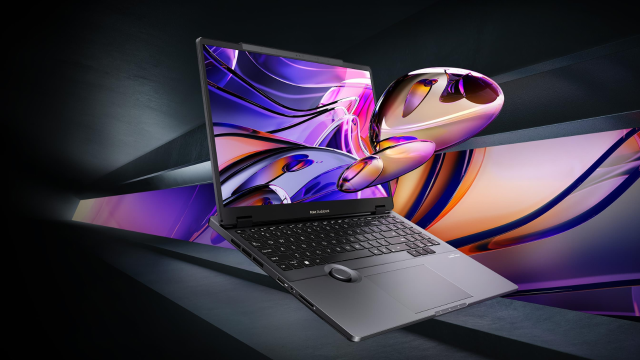ASUS loves a goofy screen. Just a really silly screen capable of some tomfoolery, like an extra one pasted on the inside of a laptop, one located in the mousepad of a laptop, or one that is the entire laptop (a foldable). Now I’ve gotten to experience ASUS’ latest wacky display – a 3D screen on a studio-level laptop (dubbed the ProArt Studiobook 16 3D OLED). It made me sick.
Like, not in a ‘this is disgusting and shameful upon the ASUS name’ way – ASUS is great as far as I’m concerned. It’s just that I happened to have a fairly bad reaction to ASUS’ 3D-screened laptop, as it played clips in a pop-out 3D form without the need for 3D glasses.
Now this isn’t new tech – just new for a laptop. ASUS’ ‘Spatial Vision Technology’ was first shown at CES 2023, and is only the latest tech product to merely adopt 3D trickery.
When Nintendo released the 3DS, it was the first gaming console to ship with an integrated 3D screen. The Avatar game on the Xbox 360, and the PlayStation 3, could be played in 3D with a compatible 3D TV. Cinema screens, for decades, have supported 3D movies.
And now, dear reader, laptop lovers can enjoy the comfort and delight [citation needed] that 3D playback brings a viewer.
Allow me to recount my experience with ASUS’ 3D laptop. I was attending the company’s launch of its newest OLED-screened laptops in Australia, of which there are 24 across the VivoBook, ZenBook and StudioBook lineups. The 3D laptop is a StudioBook, a member of the ASUS laptop family that’s aimed at heavy-duty creators that need powerful machines, with the most high-spec Nvidia and Intel tech that can be physically crammed into a laptop.
At the event, three 3D clips were shown to me: a music video involving little aliens floating toward and away from the screen, a video of a baby dancing, and a teaser trailer for Avatar: The Way of Water. These were played through a specialised 3D media playback player. To start off, the screen was super laggy without the machine plugged into power, as the CPU and GPU were underclocked to conserve energy. When plugged in, the screen seemed to run at a consistent framerate, but my brain was still caught off guard.
Though a display model in a large room of tech writers, content creators, and enthusiasts, the only way to view the 3D image was by standing perfectly adjacent to the middle of the screen, as this is where the 3D imagery was being directed. At times, the 3D imagery would flicker and jolt around the popped-out central image, and ultimately, it was just an exercise in working out my brain.
I could feel my head heating up as I watched the clips, and a similar feeling overcame me to when I would feel false acceleration and a loss of balance from VR use. My brain was obviously not enjoying the experience, and after three or so minutes, I had to stop or risk a reverse lunch.
For context, it’s not an unfamiliar feeling to me. I’m a big fan of VR and have written about it a lot, although I struggle to use my Meta Quest 2 for more than two hours at a time without feeling sick. I also tend to feel carsick when travelling and not looking out the window – my brain just likes to be sure that it’s moving, I guess.
I had to walk quite slowly after this, and when talking to people with them in my centre of vision, or looking at objects that were focally in the middle of my vision, my brain seemed to want to replicate the 3D effect similar to what was going on with the laptop. Two hours after the experience, when I first attempted to write this article, I could still feel a headache from it.
Anyway, I’m afraid ASUS’ 3D laptop won’t be coming to Australia anytime soon, as although the company has 24 OLED-screened laptops planned for the country, the 3D model is not among them.
Darn, what a shame. Anyway, it’s pretty cool how much ASUS is focusing on OLED tech, but maybe this 3D screen is an experiment worth leaving behind.
Of ASUS’ new range, its key models will be priced as follows:
- ASUS ProArt StudioBook 16 OLED: $4,999 – $5,499
- ASUS ZenBook S 13 OLED: $2,099 – $2,999
- ASUS VivoBook 15X OLED: $1,399
While a price hasn’t been indicated for a potential 3D Studiobook release, it’d likely be priced similarly to the above StudioBook.
